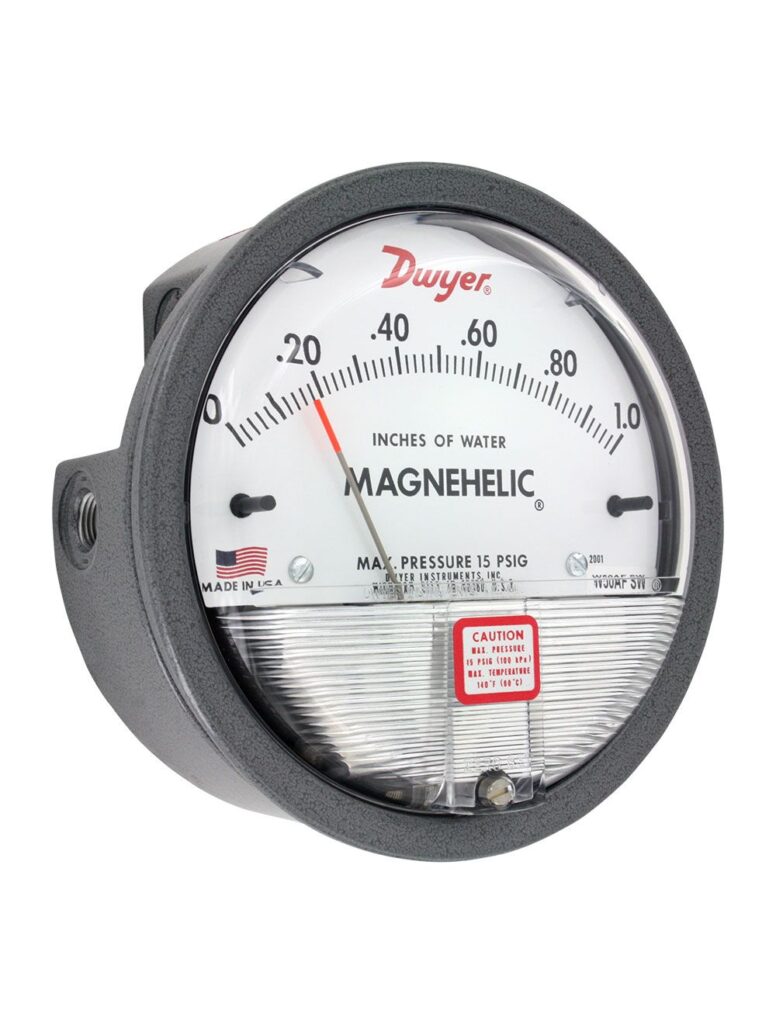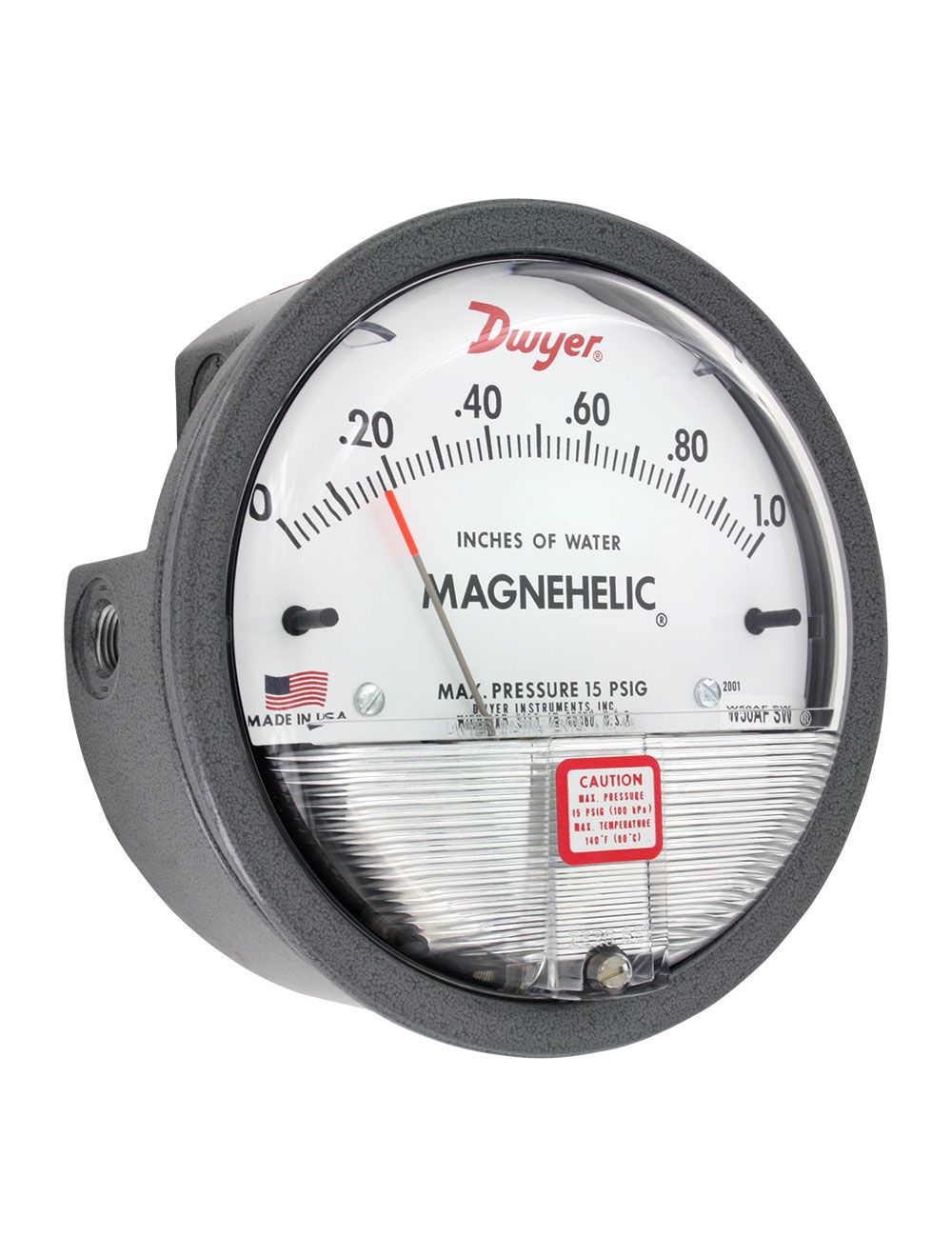What is a Pressure Gauge?
Pressure gauges are devices used to measure the pressure of a gas or liquid within a system. The pressure generated is usually measured in force per unit of surface area. For example, psig or Pounds per Square Inch Gauge is such a measurement. Most pressure gauges feature a dial or digital readout that displays the pressure.

How Do Pressure Gauges Work?
A pressure gauge works by measuring the force exerted by a gas or liquid on a sensing element within the gauge. The core principle behind how most pressure gauges work involves converting the mechanical deformation cause by the pressure into a readable value.
What are the Different Types of Pressure Gauges?
Varieties of pressure gauges are used; each type is designed for specific applications and are based on different measurement principles.
Bourdon Tube
Working Principle: Uses a curved metal tube that straightens or changes shape as pressure is applied. As a result, the movement of the tube is transferred to a pointer that moves along a dial to indicate the pressure.
Applications: Used in in industrial and general-purpose applications.
Diaphragm
Working Principle: A flexible diaphragm that deflects when pressure is applied. Meanwhile, the deflection is converted into a readable output, often through a mechanical linkage or electronic sensor.
Applications: Low-pressure measurements and where accurate readings are needed for smaller volumes or gas
Capsule
Working Principle: Consists of two metal capsules that expand or contract when exposed to the pressure. Furthermore, the capsules are connected to a linkage that moves a pointer or needle to indicate the pressure.
Applications: Ideal for low-pressure applications and is commonly used in laboratory and HVAC systems.
Digital
Working Principle: Uses electronic sensors, such as strain gauges or piezoelectric sensors, to detect changes in pressure. The sensors convert the mechanical deformation into an electrical signal, which is then displayed as a digital reading.
Applications: Used in applications requiring precise, digital readings and for environments where the traditional mechanical gauges are difficult to read.
Manometer
Working Principle: A manometer is a type of pressure gauge that measures pressure by comparing it to a reference pressure (usually atmospheric pressure). It typically consists of a U-tube or liquid column that deflects when exposed to pressure.
Applications: Common in laboratory settings, HVAC systems, and fluid systems.
Absolute
Working Principle: This gauge measures pressure relative to a perfect vacuum (absolute zero pressure) rather than atmospheric pressure. It typically uses a sealed Bourdon tube or diaphragm, which is not exposed to atmospheric pressure.
Applications: Used in vacuum systems, scientific experiments, and aerospace applications where absolute pressure is crucial.
Differential
Working Principle: Measures the difference in pressure between two points in a system. It uses either a diaphragm or a Bourdon tube to detect this differential.
Applications: Often used in HVAC systems, filtration systems, and to measure pressure drop across equipment such as filters or heat exchangers.
Piezoresistive
Working Principle: This gauge uses a piezoresistive sensor, where the resistance of a material changes with pressure. The change in resistance is measured and converted into a pressure reading.
Applications: Common in high-accuracy, scientific, and industrial measurements where precise digital readings are required.
Strain Gauge
Working Principle: A strain gauge pressure sensor uses the deformation (strain) of a material when pressure is applied. This deformation changes the resistance of the material, and the change is measured and converted into a pressure value.
Applications: Used in high-precision applications such as aerospace, automotive, and manufacturing.
Quartz
Working Principle: Quartz gauges use quartz crystals whose electrical properties change when subjected to pressure. These gauges offer very high precision and stability.
Applications: Used in high-precision scientific and industrial applications where extreme accuracy is required.
Where Can Pressure Gauges be Found?
Pressure gauges can be found throughout numerous applications and industries. Such examples are mostly commonly found in plumbing, industrial machinery, industrial applications such as steam, liquid, or gas, and HVAC systems.

